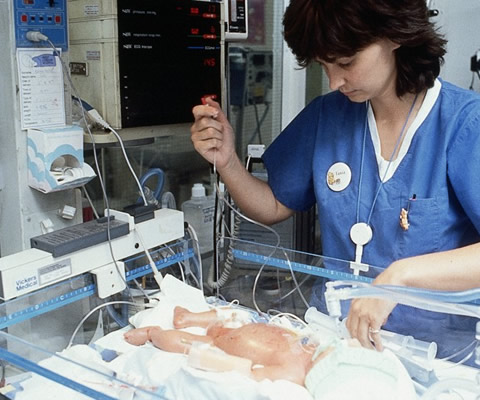Acute Pain in Children course for Medical Doctors



This session describes the principles of delivering effective analgesic management to children in acute pain associated with ongoing illness, surgery, trauma or painful procedures in a clinical setting.
Learning Objectives
By the end of this session you will be able to:
- Summarize the basic concepts of good acute pain management in children
- Recognize the importance of analgesic planning and communication
- List the general principles of managing procedural, medical, traumatic and postoperative pain
- Recognize the effect of development on analgesic use
- Explain and be able to apply the concept of multimodal analgesia
It is possible to provide effective and safe acute pain management to children of all ages in a variety of clinical settings.
Glyn originally trained at St Bartholomew’s Hospital and continued with his specialist training in London.
He has published in a number of areas on the subject of Paediatric Pain, including developmental and genetic factors affecting the use of opioids, treatment of postoperative pain in children and the treatment of medically-related pain in children.
Glyn is a content author for both the e-LA and e-PAIN projects.


Anoo has practiced exclusively in newborn care for 15 years and for the last 10 years in the Regional Neonatal Care Unit in Bristol. He manages the care of newborn babies every day in the postnatal ward and in intensive care ranging from routine care of a well baby, to delivery room management, to a complex very sick baby. In his current post he sees approximately 700 admissions to the newborn unit per year and 6500 normal deliveries.
He has a Doctorate of Medicine for his postgraduate research into topical Amethocaine gel. In addition, he has 15 peer reviewed publications in Newborn Care, including two chapters in a standard Neonatal Textbook (Roberton Textbook of Neonatal Medicine).
Anoo has a longstanding interest in pain management in newborn babies and is a content author for the e-PAIN project.
- 03_06_10 ECG III
- Posted By eIntegrity Healthcare e-Learning
- Posted Date: 2024-11-02
- Location:Online
- This third and final session about the ECG discusses cardiac conduction and arrhythmias.
- 03_06_09 ECG II
- Posted By eIntegrity Healthcare e-Learning
- Posted Date: 2024-11-02
- Location:Online
- This session follows on from ECG I and presents the ECG as an electrical map of the heart. It details the abnormalities expected with myocardial infarction and left ventricular hypertrophy.
- 03_06_08 ECG 1
- Posted By eIntegrity Healthcare e-Learning
- Posted Date: 2024-11-02
- Location:Online
- This session explains how to record an ECG, the structure of the ECG and how to interpret the results. It further explains the use of the ECG in clinical practice.
- 03_06_07 Pulmonary function test interpretation
- Posted By eIntegrity Healthcare e-Learning
- Posted Date: 2024-11-02
- Location:Online
- This session will describe some of the basic respiratory investigations, and explain the relevance of the results obtained.
- 03_06_06 An alternative approach to acid-base abno...
- Posted By eIntegrity Healthcare e-Learning
- Posted Date: 2024-11-02
- Location:Online
- This session contains a link to the BJA Education article followed by a series of self assessment multiple choice questions.<br><br>The article will open in a new window or tab depending on your browser.<br><br> CPD credits are awarded by the RCoA for the







